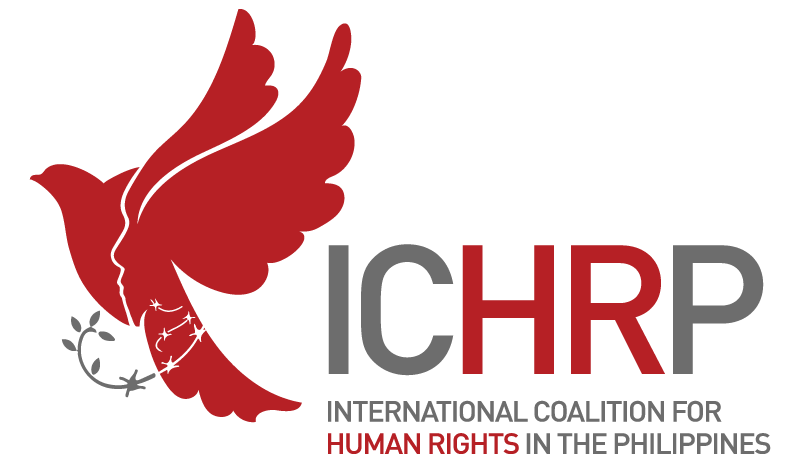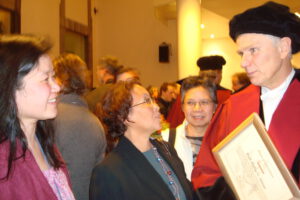UA No: 2011-03-04
UA Date :
20 March 2011
UA Case :
Extrajudicial killing; Threat/harassment/intimidation
Victim/s : Extrajudicial killing
BONIFACIO LABASAN
– 61 years old, farmer, married
– active member of Danggayan Dagiti Mannalon iti Cagayan Valley (DAGAMI or Union of Peasants in Cagayan Valley) – Isabela chapter, a peasant organization in the Cagayan Valley region, an affiliate organization of the Peasant Movement of the Philippines (KMP)
Threat/harassment/intimidation
LANIE LABASAN-MIGUEL
– married
– daughter of Bonifacio
Place of Incident :
Baranggay (village) of San Roque, Municipality of San Mateo, Isabela
Date of Incident :
9 March 2011
Alleged Perpetrator(s) :
Two (2) unidentified men riding in tandem on a Kawasaki Bajaj motorcycle with no plate number
Account of the Incident:
On March 9 at around 10:30 in the morning, Bonifacio Labasan was on his way to his relative’s house in Baranggay Victoria, Municipality of San Mateo, to get some sacks to be used for harvesting palay or rice grains. His daughter, Lanie Labasan-Miguel, hitched a ride on her father’s motorcycle, for she too was going in the same direction as her father was.
While on the road, they have noticed that two men riding in tandem on a motorcycle seemed to be following them. When the Labasans reached Baranggay San Roque, the men who were following them flagged them down and ordered them to stop. Bonifacio did not stop their motorcycle and the men instead overtook them, forcing them to stop.
One of the men, who was described by Lanie as tall and fair-skinned, approached Bonifacio and ordered him to come with them. Bonifacio refused to go with the men and asked them why they were taking him since he did not know any of the men and he didn’t have anything against them. Since Bonifacio refused to dismount from his motorcycle, the tall man pulled an object wrapped with a handkerchief from his waist and pointed it at Bonifacio.
Lanie saw that the man was pointing a gun at his father and pleaded him to not to hurt her father. The man suddenly shot Bonifacio on his right side. When Bonifacio fell, the man moved closer and again shot Bonifacio in the head, killing him. The two men immediately left on board their motorcycle.
Lanie began shouting for help after the men left. Two policemen arrived at the scene after almost an hour. The police interviewed the daughter and brought her back home, and said that they won’t move the body while conducting an investigation.
Prior to the killing, on March 8, Bonifacio told Lanie that he felt that he was being watched but he didn’t give it much importance.
Bonifacio was active in Dagami’s campaign against the bio-ethanol project in Isabela, which will affect thousands of hectares of agricultural lands in the province; it will mean displacement of thousands of farmers from their farms. The proposal to construct a bio-ethanol plant in the province is being supported by the provincial government.
Recommended Action:
Send letters, emails or fax messages calling for:
The immediate formation of an independent fact-finding and investigation team composed of representatives from human rights groups, the Church, local government, and the Commission on Human Rights that will look into the killing of Bonifacio Labasan.
The military to stop the labeling and targeting of human rights defenders as “members of front organizations of the communists” and “enemies of the state.”
The Philippine Government to withdraw its counterinsurgency program Oplan Bayanihan, which victimizes innnocent and unarmed civillians
The Philippine Government to be reminded that it is a signatory to the Universal Declaration of Human Rights and that it is also a party to all the major Human Rights instruments, thus it is bound to observe all of these instruments’ provisions.
Protection for Lanie as she is the witness to this murder; as well as protection for the family.
You may send your communications to:
H.E. Benigno C. Aquino III
President of the Republic
JP Laurel St., San Miguel
Manila Philippines
Voice: (+632) 564 1451 to 80
Fax: (+632) 742-1641 / 929-3968
E-mail: corres@op.gov.ph / opnet@ops.gov.ph
Sec. Teresita Quintos-Deles
Presidential Adviser on the Peace Process
Office of the Presidential Adviser on the Peace Process (OPAPP)
7th Floor Agustin Building I
Emerald Avenue
Pasig City 1605
Voice:+63 (2) 636 0701 to 066
Fax:+63 (2) 638 2216
osec@opapp.gov.ph
Ret. Lt. Gen. Voltaire T. Gazmin
Secretary, Department of National Defense
Room 301 DND Building, Camp Emilio Aguinaldo,
E. de los Santos Avenue, Quezon City
Voice:+63(2) 911-9281 / 911-0488
Fax:+63(2) 911 6213
Email: osnd@philonline.com
Atty. Leila De Lima
Secretary, Department of Justice
Padre Faura St., Manila
Direct Line 521-8344; 5213721
Trunkline 523-84-81 loc.214
Fax: (+632) 521-1614
Email: soj@doj.gov.ph
Hon. Loretta Ann P. Rosales
Chairperson, Commission on Human Rights
SAAC Bldg., UP Complex
Commonwealth Avenue
Diliman, Quezon City, Philippines
Voice: (+632) 928-5655, 926-6188
Fax: (+632) 929 0102
Email: chair.rosales.chr@gmail.com, lorettann@gmail.com
Please send us a copy of your email/mail/fax to the above-named government officials, to our address below.
URGENT ACTION Prepared by:
KARAPATAN
urgentaction@karapatan.org
—




